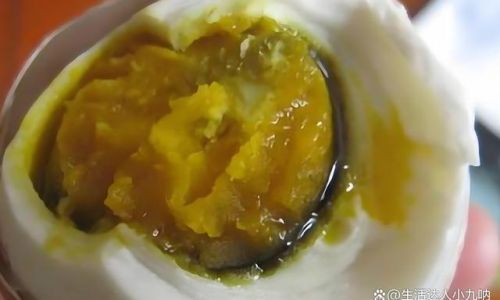Table of content
Pickled eggs are a delightful and versatile snack enjoyed across various cultures. Whether you’re looking for a tangy appetizer, a quick meal addition, or a unique gift for foodie friends, knowing how to pickle eggs to perfection can elevate your culinary repertoire. This guide delves into the intricacies of creating delicious pickled eggs, from selecting the right ingredients to perfecting the brining process and flavoring techniques. By the end, you’ll be equipped to craft pickled eggs that are not only tasty but also bursting with flavor and character.
Understanding the Basics of Pickling Eggs
Before diving into the specifics of recipes and techniques, it’s essential to grasp the fundamental principles behind pickling. Pickling is a preservation method that involves immersing food in a brine—a solution of salt, acid, and sometimes sugar and spices—to extend its shelf life and enhance its flavor. In the context of pickled eggs, the brine not only preserves the eggs but also infuses them with a tangy, savory taste.
Choosing the Right Eggs
Start with fresh, high-quality eggs. Free-range or organic eggs often have richer flavors and more vibrant yolks, but any fresh eggs will work. Ensure the eggs are at room temperature before you begin; cold eggs can crack more easily during the boiling process.

Boiling the Eggs
Boiling the eggs to the desired doneness is crucial. Overcooked eggs can be dry and rubbery, while undercooked eggs might not hold up well in the brine. Here’s a reliable method:
- Place the eggs in a single layer in a pot.
- Cover them with cold water by about an inch.
- Bring the water to a rolling boil over high heat.
- Once boiling, reduce the heat to low and let the eggs simmer for 6-7 minutes for soft-boiled eggs, 9-10 minutes for medium-boiled, or 12-13 minutes for hard-boiled.
- Immediately remove the eggs from the hot water and place them in an ice bath to stop the cooking process.
Peeling the eggs can be tricky. To make it easier, gently tap the eggs all over with the back of a spoon, then roll them on the counter to crack the shell all around. Peel under running water to help separate the shell from the egg.
Creating the Perfect Brine
The brine is the heart of pickled eggs. It provides the tang, the preservation, and much of the flavor. There are various brine recipes, each offering a unique taste profile. Here are some foundational brine recipes and variations to get you started.
Classic Vinegar Brine
Ingredients:
- 2 cups distilled white vinegar
- 1 cup water
- 1/4 cup sugar
- 2 tablespoons kosher salt
- 1 teaspoon whole black peppercorns
- 1 bay leaf
- 1 clove garlic, sliced (optional)
- 1 small onion, thinly sliced (optional)
Instructions:
- Combine vinegar, water, sugar, and salt in a saucepan and bring to a simmer, stirring until the sugar and salt are fully dissolved.
- Add the peppercorns, bay leaf, garlic, and onion if using.
- Remove from heat and let cool slightly.
- Place peeled, hard-boiled eggs into a clean, non-reactive container (like a glass jar).
- Pour the cooled brine over the eggs, ensuring they are fully submerged.
- Cover and refrigerate for at least 24 hours before enjoying. The longer they sit, the more flavor they will absorb.
Beer Brine
For a twist on traditional pickled eggs, try a beer brine. The maltiness of the beer adds a depth of flavor that complements the tang of the vinegar.
Ingredients:
- 1 bottle (12 oz) light beer
- 1/2 cup apple cider vinegar
- 1/4 cup sugar
- 2 tablespoons kosher salt
- 1 teaspoon mustard seeds
- 1 teaspoon dill seeds
- 1 bay leaf
- 1 clove garlic, sliced
Instructions:
- Pour the beer into a saucepan and add the vinegar, sugar, and salt. Stir until the sugar and salt are dissolved.
- Add the mustard seeds, dill seeds, bay leaf, and garlic.
- Bring to a simmer, then remove from heat and let cool slightly.
- Follow the same process as with the classic vinegar brine for placing eggs and refrigerating.
Pickling with Spices and Herbs
Infusing your brine with spices and herbs can transform your pickled eggs into a gourmet treat. Experiment with combinations like:

- Red pepper flakes and garlic for a spicy kick.
- Fresh dill, mustard seeds, and a touch of turmeric for a vibrant, Eastern European-inspired flavor.
- Cinnamon sticks, cloves, and star anise for a sweet and spicy Asian twist.
Remember, the key to balanced flavors is moderation. Start with smaller amounts of spices and herbs, taste the brine, and adjust as needed.
Advanced Techniques for Enhanced Flavor
Once you’ve mastered the basics, it’s time to explore advanced techniques that can elevate your pickled eggs to new heights.
Pickling in Multiple Stages
For complex, layered flavors, consider pickling your eggs in multiple stages. Start with a basic brine for initial preservation and flavor development, then transfer the eggs to a second brine with different spices and herbs for an additional layer of taste. This method requires more time and effort but yields incredibly flavorful results.
Smoking the Eggs
Smoking adds a smoky, earthy depth to pickled eggs that’s hard to resist. You can use a stovetop smoker, a charcoal grill with wood chips, or an electric smoker. Simply smoke the peeled, hard-boiled eggs for about 30 minutes before placing them in the brine. The smoke flavor will meld with the brine’s tang, creating a unique and addictive taste.
Marinating in Oil
For a richer, more indulgent pickled egg experience, try marinating them in oil after pickling. This method is often used in Mediterranean and Middle Eastern cuisines. Once the eggs have been pickled to your liking, remove them from the brine and pat them dry. Place them in a clean jar and cover them with a flavorful oil blend, such as olive oil infused with garlic, rosemary, and lemon zest. Let them marinate in the refrigerator for at least a week before enjoying.
Serving and Enjoying Pickled Eggs
Pickled eggs are incredibly versatile and can be enjoyed in numerous ways. Here are some serving suggestions to inspire you:
- Appetizers: Serve pickled eggs halved or quartered with a sprinkle of fresh herbs and a dollop of aioli or sour cream.
- Salads: Add chopped pickled eggs to potato salad, macaroni salad, or green salad for a tangy, protein-packed boost.
- Sandwiches: Use pickled eggs as a filling for sandwiches, especially those with bacon, lettuce, and tomato or avocado.
- Deviled Eggs: Take deviled eggs to the next level by using pickled eggs as the base. Mix the yolks with a bit of the brine for extra tang, then garnish with paprika, chives, or a dollop of spicy mustard.
- Snacks: Keep a jar of pickled eggs in the fridge for a quick, satisfying snack. They’re perfect on their own or paired with a slice of crusty bread.
Conclusion
Making delicious pickled eggs is an art that combines science, creativity, and patience. By understanding the basics of pickling, experimenting with different brine recipes, and exploring advanced techniques, you can craft pickled eggs that are as unique as they are delicious. Whether you’re serving them at a dinner party, packing them for a picnic, or simply enjoying them as a snack, pickled eggs offer a tangy, satisfying treat that’s sure to delight your taste buds. Happy pickling!





0 comments